The picture you see below is a screenshot of our former home page image. In this post, we dive in deep to tell you what all of those recipe/menu development terms mean, and, consequently, all that we do here at Food & Drink Resources.

3C Development Process – FDR’s 72-hour immersive process that allows clients to go from ideation to recipe development to consumer testing all in one location.
Brand Positioning – What you do and why it matters. How a company presents its unique self to its customers.
Concept Ideation – Look at industry and consumer trends as well as a client’s target market to brainstorm new ideas for branding, products, menu items, and restaurant concepts.
Consumer Insights And Development – Using customer insight to gain valuable information about a product and a brand, we work to understand the underlying motivations and feelings of consumers to ensure the success of a product. Also called consumer research, market research, and strategic planning.
Central Location Testing (CLT) – Like it sounds, CLTs bring groups of people together to interact with a product and respond to a survey. Considered a quantitative test. At FDR, CLTs are often taste tests, but CLTs can be designed to meet any research need.
Commercialization – The process of bringing an idea to the marketplace for ownership and financial gain.
Consumer Research – General term to describe preferences, motivations, and buying behavior of a customer group. Both qualitative and quantitative research falls under consumer research and is normally completed by market research companies that specialize in this type of research.
Concept Sort – Similar to a concept test, but involves comparing more than one product (e.g., six cups versus one cup).
Concept Testing – Evaluating a product on its own merit. Comes down to the questions asked.
Focus Groups – A group of people participate in a guided discussion about a product or service. Focus group sessions are usually digitally recorded so clients can observe and reference later.
Food And Beverage Industry – A vast network of companies and independent workers that source, produce, transport, prepare, and sell food and drink in all its forms; from single ingredients and machinery to intellectual property and service staff.
Food And Beverage Product Development – All foods (packaged food and beverage, restaurant menu items, or otherwise) taken from idea to market.
Ideation – A business process for developing ideas into usable practices.
Immersion Tours – Immerse clients or customers into the product you are ideating or testing. Could be a restaurant visit or a cooking experiment. Really anything where consumers interact with the product.
In-Depth Interview (IDI) – Could be a 45-minute conversation or an eight-hour session together where we go through cupboards and travel to the grocery store. Big IDIs are called ethnographies. Sometimes called one-on-one interviews.
Market Research – Discover preferences to serve as the basis for concept design. When it comes to food and beverage market research, researchers look to uncover the preferences of the wider population for more successful recipes and menus.
Moderator – A person who presides over a consumer research activity.
One-On-One Interviews – See in-depth interview.
Online Surveys – Gather consumer opinions using web-based surveys. Allows us to pinpoint target markets for new concepts among other things.
Product Commercialization – Effectively introducing a new product into commerce.
Product Ideation– Look at industry and consumer trends to conceive game-changing ideas for new products.
Quantitative Testing – Using computational techniques that can be replicated the same way every time. Some say quantitative testing is about quantity, but we say it’s about science. Examples of quantitative testing include surveys and central location testing (CLT).
Qualitative Testing – Qualitative testing is an art. Using a highly skilled facilitator, best practices, and a previously determined set of questions, respondents share ideas and opinions in various settings such as focus groups and in-depth interviews. Qualitative gives you reason whereas quantitative gives you fact.
Recipe Refinement – Reworking a recipe by testing and tasting to meet a client’s nutritional and quality standards.
Recipe Development – Bringing a recipe from ideation to consumers according to the client’s specifications. At FDR, we have the ability to make on-the-spot adjustments to the product or recipe with real-time consumer feedback.
Restaurant Concept Development – Conceiving and developing all of the elements of a restaurant together.
Sensory Testing – Analysis to reveal how consumers perceive the appearance, aroma, taste, and texture of a product. At FDR, we work in real-time testing, adjusting, and gaining immediate feedback from consumers at our facility. Typically involves minor tweaks to a product. Say, replacing one ingredient. Tests are usually done blind. The advanced version usually includes super tasters.
Taste Test Facility – A location where culinary consumer research is completed. Typically, there is a commercial kitchen on-site with moderators who fully understand the needs of the food and beverage industry and food market research.
Thanks for stopping by and reading the Food & Drink Resources blog. Here we talk about food trends, culinary innovation, and the work of our team.
